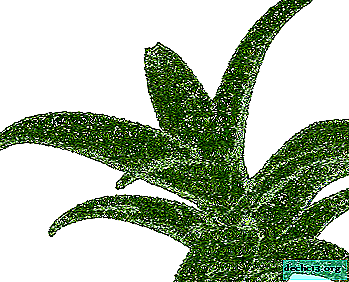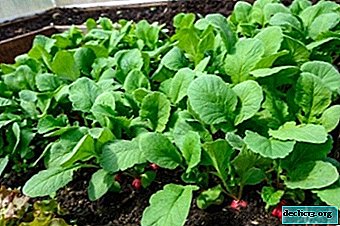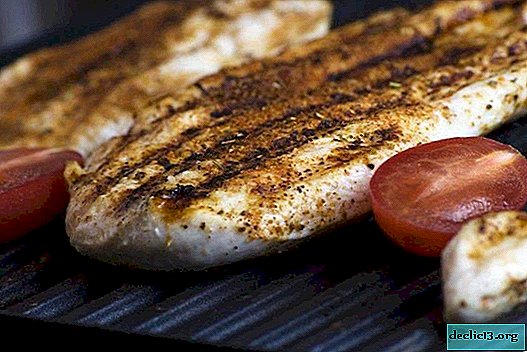Description of varieties of grassy hibiscus and features of the cultivation of this perennial

Grassy hibiscus is popular with gardeners for a reason. Large colorful flowers are very attractive.
They decorate streets and gardens everywhere.
The flower is obtained as a result of selection, therefore it is considered hybrid.
Growing, reproduction is not difficult, a novice gardener can cope. What kind of plant this article will tell.
Description
Grassy Hibiscus - a genus of plants of the family Malvaceae (Latin name is Hibiscus). Cultivated winter-hardy shrubs.
The plant has grafted leaves on petioles and large flowers with brightly colored corollas. Fruits - capsules breaking up into five wings.People call it a Chinese rose. Well-known hibiscus tea is dried flowers of certain types.
History of occurrence
 In the USA, the Fleming brothers have been working for several decades to develop a variety adapted for cultivation in sharply continental regions of the globe. By crossing American species - Swamp hibiscus, Armed received a frost-resistant variety - grass hibiscus.
In the USA, the Fleming brothers have been working for several decades to develop a variety adapted for cultivation in sharply continental regions of the globe. By crossing American species - Swamp hibiscus, Armed received a frost-resistant variety - grass hibiscus.
The second name for the culture is hybrid hibiscus. The roots did not die at a temperature of minus 30 degrees, when sheltering for the winter. It freezes without snow. American breeders have created over 500 varieties.
At the same time as brothers from America, in Russia, breeder Rusanov was engaged in the cultivation of grassy hibiscus. Beautiful, but not weather-resistant species were taken as the basis. To this day, preserved varieties such as "red", "pink".
In nature, an evergreen shrub grows in a subtropical climate, tropics (China, the islands of Haiti, Fiji, Sri Lanka, the banks of the Mississippi River). Unpretentious hybrid bushes are grown in the southern regions of Russia (Krasnodar region). Some varieties are cultivated in the middle lane.
Varieties: description and photo
Today, breeders offer new varieties of herbaceous perennials with bright colors of inflorescences for cultivation in temperate regions of the world.The most interesting and popular varieties of grass hibiscus and their photos can be found below.
Copper King (Gibiskus moscheutos Kopper king)
Translated, the copper king is a winter-hardy perennial. Reaches a height of 100-120 cm. The color scheme is pink-white with large flowers. Foliage gives away bronze.
In winter, the upper part of the plant freezes. So that the roots are not damaged by frost without snow, you should sprinkle with foliage.

Old Ella (Hibiscus moscheutos "Old Yella")
Frost-resistant perennial bush. The plant grows to 120-130 cm in height. Grade advantage in flowers. They are creamy with a red throat, large, spectacular. Petals are wavy. The foliage of the hybrid is green, in the sun it gives off purple colors.
Prefers the calm, sunny corners of the garden. Well adjacent to roses.

Cranberry Crush
Perennial shrub. The root system does not freeze at a temperature of minus 30 degrees. Scarlet flowers with overlapping petals, circumference up to 25 cm. For planting, choose sunny places.
It blooms from mid-summer to September until the frosts. The crown of the bush grows to 80-90 centimeters.

Youth
A popular variety of grassy hibiscus. The bush grows with human growth. Inflorescences remind in shape tulips of a soft pink shade 10 centimeters. The bottom of the flower is milky.
It is characterized by unpretentiousness and resistance to low temperatures.

Pink and china
A dense, short bush with yellow-green foliage and strong shoots. Bell-shaped flowers 10-12 centimeters, pale pink with a yellowish tint.

Late
Compact bush in width and height reaches 90-100 cm. Great for planting along the tracks.
Flowers are not large up to 7 cm in circumference, crimson with lilac shimmer. The leaves are oval - arrow-shaped. During the season, powerful shoots grow fully covered with leaves.

Pale pink
Grassy shrub. Over the summer, the crown grows to two meters in height.
The shoots are abundantly covered with three-cut leaves. Pale pink flowers are similar to tulips.not large 10-12 centimeters.

In varieties of grassy hibiscus, with the onset of cold weather, the crown freezes, the roots of the culture winter in the ground. In the spring with the onset of sunny days, new shoots appear.
Outdoor Plant Care
- Planted in sunny, loamy garden areas.
- Fertile, non-calcareous soil.
- Avoid places with stagnant water.
- Water as needed. For lush flowering, spray the crown with warm water.
- Fertilize with potash fertilizers.
Periodically loosen the soil around the plant, weed.
The plant itself prepares for wintering. It is important not to cut off the crown until it is completely dry.After the plant has faded and began to fade, all the nutrients return to the roots. The branches are completely removed with the onset of persistent frost. Water the soil, fertilize it with ash and cover it with sawdust and dry foliage. The spruce branches are best suited.
Propagation Features
Cuttings
- In autumn or spring, cut off the upper part of the appendage 10-15 centimeters long at an angle and put it in a container of water.
- Add water to the water to stimulate the root system. It is important that the stalk has 2-3 internodes.
- We wait until the roots appear.
- Plant the cuttings in a pot, with loose fertilized soil, we take care of the houseplant all winter.
- In the spring transplant into the garden. Avoid direct sunlight. Will please with flowers in a year of planting.
Seeds
It is difficult to get a flowering bush by seeds. Flowering will come in three to four years. He is engaged in breeders.

- Soak the material in a gauze napkin in March, in a solution of "Kornevin", "epin."
- Separated seeds transplanted separately into pots.
- Cover with glass, bag.
- Maintain a temperature of 25-27 degrees.
- Ventilate regularly, prepare seedlings for open ground.
- Watering with a warm solution of water with phytosporin or any other antifungal drug.
- Transfer to the garden when two pairs of leaves appear in steady warm weather.
Dividing the bush
The underground part of the plant grows every year. In early spring, you can divide the bush and plant it yourself:
- Only young roots cut.
- Slices treated with ash, charcoal.
- After planting, pour warm water.
Separated bushes bloom a little later than usual, but this is only in the first year.
Diseases and Pests
- In dry weather, grassy hibiscus is threatened by a spider mite. Spraying the crown with water in the evenings will help to avoid. Actara will kill pests.
- From leaf-eating insects treated with lepidocide.
- Often gets sick with chlorosis (lower leaves fall). It is recommended to feed phosphorus fertilizers twice a month.
- From invading aphids, treat with tobacco or ash.
Similar flowers

- Ukrainian mallow is very similar, often confused with it.
- Dwarf ficus is similar in leaves to indoor varieties of hibiscus.
- Shrub roses.
- Begonia. Blooms in large colorful flowers.
- Terry geranium. Perennial long flowering bush.
A bush with gramophone flowers can be grown in the suburbs. You just need to choose the right variety.
Grassy Hibiscus - the highlight of the garden and the pride of the gardener. It will give the garden a tropical look and surprise with a variety of colors. Low-growing varieties will decorate paths, borders. The plants above will make up exotic compositions in the garden.

















